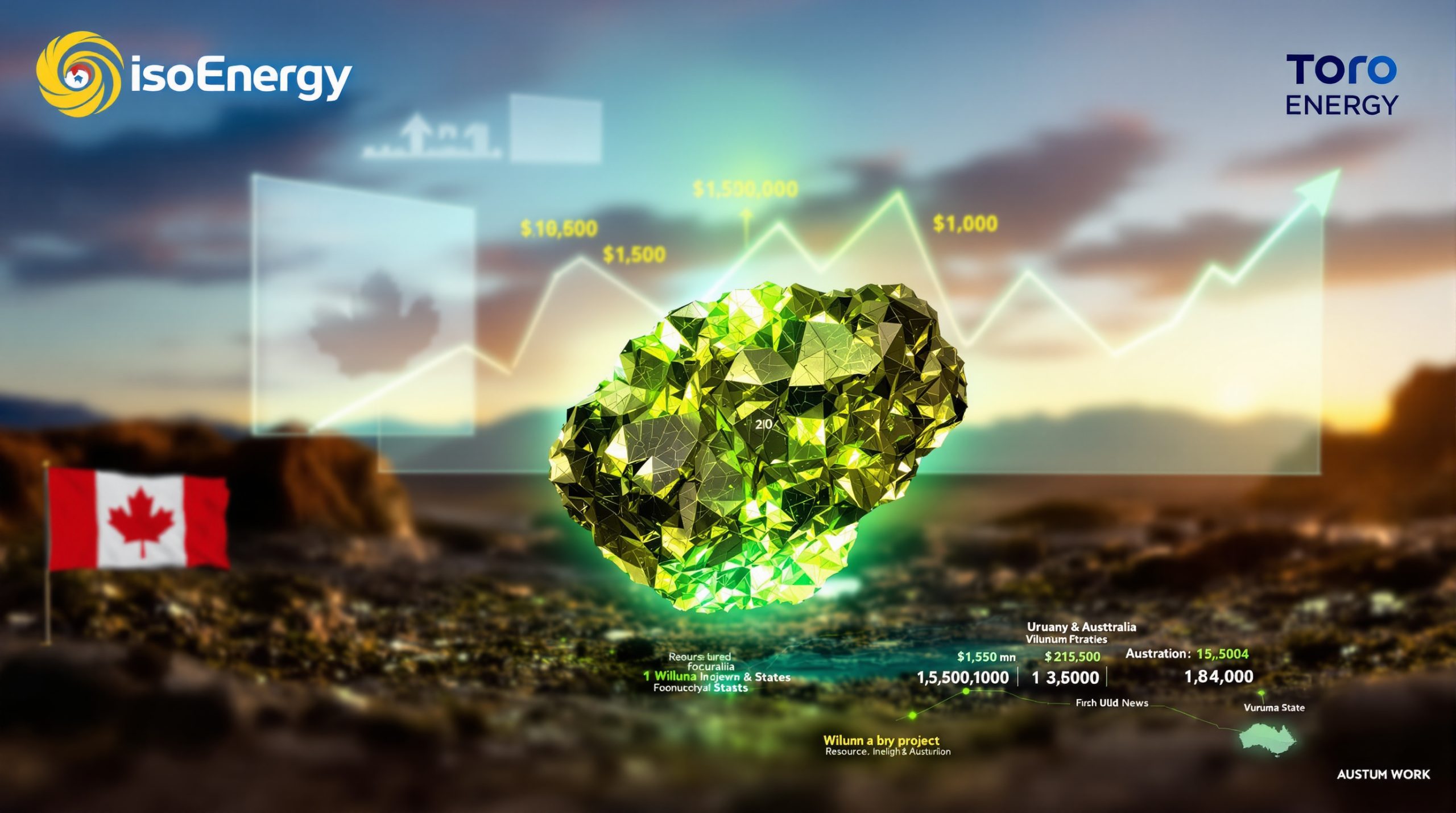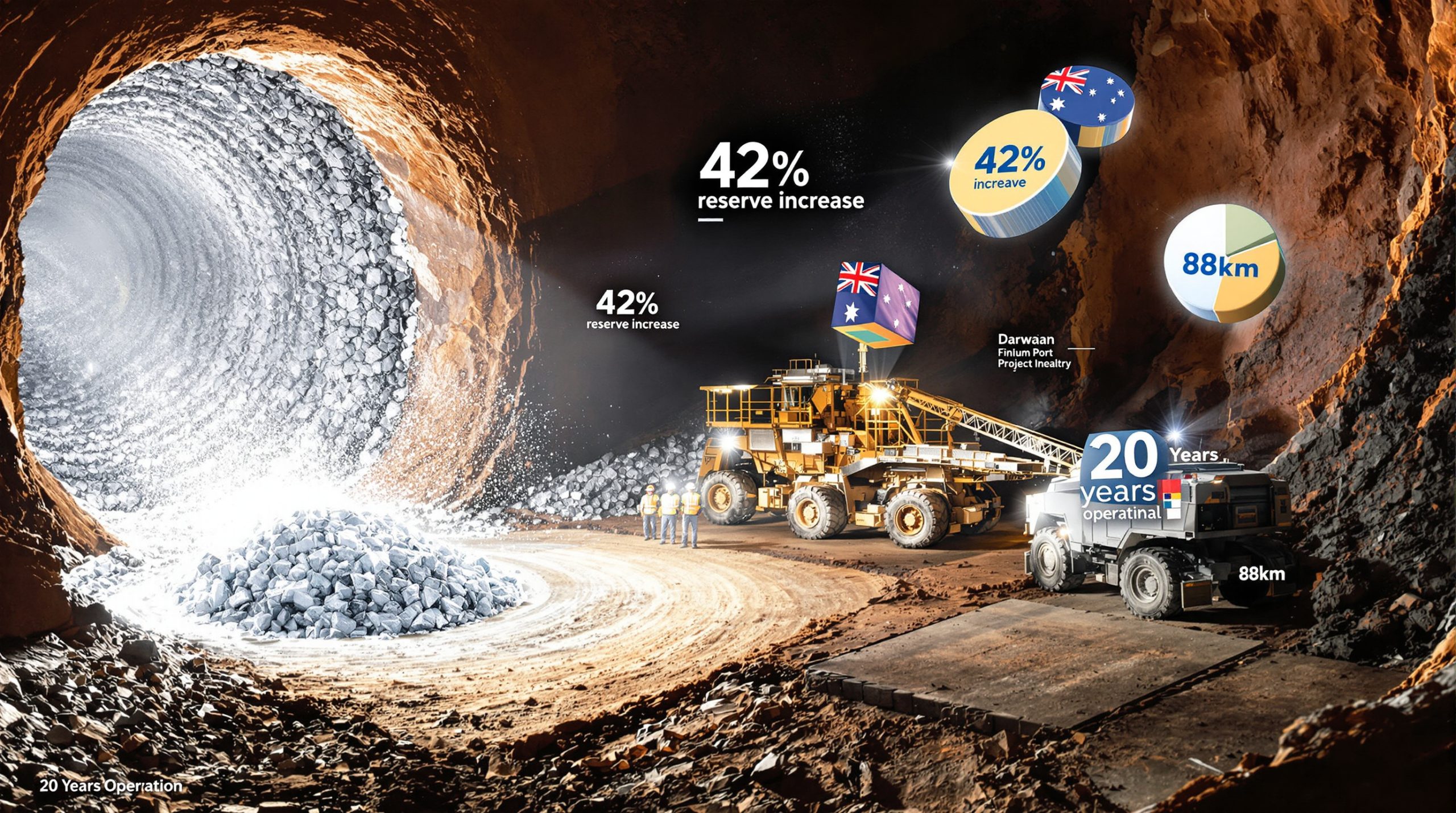The Golden Milestone: Why Has Gold Surpassed $4,000?
Gold has shattered previous records in 2025, crossing the psychological $4,000 per ounce threshold for the first time in history. This remarkable achievement represents a substantial increase in value since the beginning of the year, creating both opportunities and challenges across global markets.
The precious metal's meteoric rise stems from a perfect storm of economic conditions that have converged to drive unprecedented demand. Central bank buying has reached extraordinary levels, creating consistent pressure on available supply. Persistent geopolitical tensions continue to fuel uncertainty in financial markets, while a multi-month decline in the US dollar's strength has made gold more attractive to international buyers.
Institutional investors have demonstrated renewed interest in gold as a safe-haven investment, particularly as lingering inflation pressures remain despite monetary policy shifts. This combination of factors has propelled gold prices 2025 to heights that even the most bullish analysts failed to predict at the start of the year.
Market participants are increasingly characterizing this gold rally as "the great debasement trade" – reflecting a growing concern about the long-term stability of fiat currencies and their purchasing power. This terminology indicates a fundamental shift in how investors view the role of gold in modern portfolios.
This milestone marks a significant turning point in gold's trajectory, with many analysts now reassessing their previous forecasts as the metal continues to outperform expectations. The record high analysis shows that the psychological impact of breaching the $4,000 level has further accelerated interest from retail investors who had previously remained on the sidelines.
What Economic Factors Are Propelling Gold's Rise?
Central Bank Accumulation
Central banks worldwide have dramatically increased their gold reserves in 2025, continuing a trend that began several years earlier. This institutional buying represents a fundamental shift in reserve asset preferences as major economic powers diversify away from traditional currency holdings.
Emerging market central banks have been particularly active in leading acquisition efforts, with several countries making significant additions to their national reserves. Meanwhile, traditional European bank holders have notably reduced their selling activities, further tightening available supply.
This strategic positioning against currency volatility reflects growing concerns about monetary stability in an increasingly fractured global economic landscape. Central banks view gold as a hedge against potential currency crises and a store of value that exists outside the traditional banking system.
The consistent and substantial nature of these purchases has created persistent upward momentum forecast throughout 2025, establishing a solid foundation for the current rally.
The "Great Debasement Trade"
Investors have increasingly embraced what market analysts are calling the "great debasement trade" – positioning assets to protect against perceived currency devaluation. This perspective has gained significant traction as concerns about long-term fiat currency stability have intensified.
The expansionary monetary policy implemented by major central banks in recent years has raised questions about potential long-term effects on currency values. In response, sophisticated investors have developed hedging strategies against potential currency crises, often centered around increased gold allocations.
Institutional portfolio managers have engaged in substantial rebalancing toward hard assets, recognizing historical precedent showing gold's performance during periods of currency devaluation. This shift represents a significant reallocation of capital across the investment landscape.
Financial historians note that these patterns closely mirror previous periods of currency uncertainty, though the scale and coordination of current positioning is unprecedented in modern markets.
Interest Rate Environment
The interest rate landscape has significantly influenced gold's attractiveness throughout 2025. With central banks continuing rate-cutting cycles globally, the opportunity cost for holding non-yielding assets like gold has diminished considerably.
The International Monetary Fund expects global growth to remain near 3% over the next two years, providing central banks with justification to maintain accommodative monetary policies. This economic outlook supports continued low interest rate environments across major economies.
Real yields remain negative in many economies when adjusted for inflation, making gold's zero yield comparatively attractive. Forward guidance from major central banks suggests accommodative policies will continue, further supporting the investment case for precious metals.
Market analysts have observed a strong correlation between rate expectations and gold price movements, with each dovish central bank announcement triggering fresh rounds of buying in the gold market.
How Are Major Financial Institutions Forecasting Gold's Future?
Updated Price Targets
Leading financial institutions have dramatically revised their gold price forecasts upward throughout 2025, reflecting the changing market dynamics and stronger-than-expected price performance. Analysts have been forced to reconsider their models as gold prices 2025 have consistently outperformed previous projections.
These forecast revisions reflect a fundamental reassessment of gold's role in the modern financial system, with many institutions acknowledging they had underestimated the impact of central bank buying and geopolitical factors on price action.
Institutions are increasingly incorporating alternative metrics beyond traditional supply-demand analysis, recognizing that sentiment and positioning can drive prices well beyond fundamental valuations in the current environment.
Most updated forecasts now acknowledge the possibility that gold could maintain prices above the $4,000 level through year-end, with potential for further gains if current economic conditions persist.
Bullish Long-Term Scenarios
Several institutions have outlined potential scenarios where gold could reach even higher levels in coming years. These forecasts typically incorporate factors such as persistent inflation, continued central bank buying, and further deterioration in geopolitical stability.
Quarterly progression models show potential for steady increases through the remainder of 2025, with technical analysis indicating possible further breakouts above current levels. Advanced forecasting methods, including AI-driven models, are suggesting sustained momentum could carry prices significantly higher.
These bullish scenarios are typically predicated on continued monetary policy accommodation from major central banks and the absence of significant increases in real interest rates. Some analysts have proposed that under stagflation scenarios, where economic growth slows while inflation remains elevated, gold could experience particularly strong performance.
Institutional research increasingly acknowledges that the traditional ceiling on gold prices 2025 may have fundamentally shifted, requiring a complete reassessment of long-term price potential.
Risk Assessment Factors
Despite the bullish outlook, analysts have identified key risk factors that could impact gold's trajectory. Potential pullbacks of 10-15% are considered possible if geopolitical tensions ease or if economic data triggers a reassessment of monetary policy expectations.
Technical resistance levels exist at psychological price points, particularly around round numbers, which could trigger profit-taking behavior after significant rallies. Market positioning data suggests that some speculative positions may be vulnerable to correction if sentiment shifts.
Mining supply responses to sustained high prices could eventually increase available supply, though analysts note that development timelines and declining ore grades limit the speed at which new production can come online.
Prudent investors are advised to consider these risk factors when determining allocation sizes, with many analysts suggesting a measured approach to gold exposure despite the bullish outlook.
What Geopolitical Factors Are Influencing Gold Markets?
Global Tensions and Uncertainty
Ongoing geopolitical conflicts have created a climate of uncertainty that traditionally benefits gold as a safe-haven asset. Regional conflicts continue to create economic disruptions, with impacts ranging from supply chain challenges to energy price volatility.
Trade tensions between major economies have persisted through 2025, contributing to market nervousness and encouraging defensive positioning among institutional investors. Diplomatic standoffs affecting market sentiment have remained unresolved, creating an environment where gold's perceived stability becomes increasingly attractive.
Resource nationalism has affected mining jurisdictions in several regions, raising questions about reliable access to new gold supplies. Political transitions in major economies have further contributed to market uncertainty, with policy continuity concerns driving precautionary buying.
These factors combine to create a backdrop of persistent uncertainty that typically supports gold prices, regardless of other economic variables.
De-Dollarization Trends
The accelerating trend of de-dollarization has supported gold's rise throughout 2025. Strategic shifts away from USD in international transactions have been announced by several major economies, creating structural changes in global currency flows.
Development of alternative payment systems designed to reduce dependency on US-controlled financial infrastructure has continued to gain traction. Bilateral currency agreements bypassing the dollar have expanded beyond initial participants, creating a broader ecosystem of non-dollar trade.
Central bank diversification strategies increasingly include substantial gold components alongside reduced dollar allocations. Gold's role as a neutral reserve asset has gained renewed appreciation among financial authorities seeking to minimize political risk in their reserve holdings.
Financial analysts note that these de-dollarization trends, while gradual, represent a structural shift in the international monetary system that could support gold prices for years to come.
How Are Gold Mining Companies Responding to Price Increases?
Production Dynamics
Gold mining companies have adapted their strategies in response to higher prices, with many producers reassessing previously marginal projects that have become economically viable at current price levels. Exploration budgets have increased substantially, targeting new discoveries that can sustain production in the medium term.
Operational efficiency improvements have become a major focus as companies seek to maximize margins while prices remain elevated. Strategic merger and acquisition activity has accelerated as producers look to secure quality assets with long production lives.
Capital expenditure has increased substantially across the sector, with many companies prioritizing expansion projects that can increase production within 1-2 years. Industry analysts note that this supply response remains measured, with companies maintaining financial discipline following lessons learned in previous cycles.
The sector's approach reflects a balance between capitalizing on current high prices and maintaining sustainable operations through potential future price volatility.
Australian Gold Sector Performance
The Australian gold sector has particularly benefited from the price surge, with producers enjoying exceptional margins given their cost structures and favorable currency movements. Mid-tier producers are generally maintaining production guidance despite occasional operational challenges.
Development projects across the country have accelerated toward production as financing has become readily available and economic hurdle rates are easily cleared at current gold prices. All-in sustaining costs remain competitive globally, averaging between $1,500-1,900 per ounce for most Australian producers.
Medium-term production growth targets are being raised across the sector as companies gain confidence in the sustainability of current prices. Return on invested capital metrics have improved substantially, with leading producers now generating returns well above their cost of capital.
Analysts have highlighted the Australian gold sector as particularly well-positioned given its combination of geological potential, established infrastructure, and stable regulatory environment.
Case Study: Catalyst Metals
Catalyst Metals exemplifies both the opportunities and challenges facing gold producers in the current high-price environment. The company recently reported that its September quarter production was approximately 10% below guidance, primarily due to technical challenges with crushing equipment availability during processing circuit upgrades and mill liner installations.
Despite this temporary setback, which triggered negative share price reaction, the company has maintained its full-year guidance at 100,000-110,000 ounces with all-in sustaining costs between $2,200-$2,650 per ounce. This implies stable production and growth rates from the previous year.
Return on invested capital for Catalyst is forecast to rise to approximately 72%, an exceptional figure that highlights the financial benefits of operating in the current price environment. Recent earnings revisions have eased by about 4%, primarily due to a capital raise conducted to fund the company's growth strategy.
Development of new mines at Trident, K2, and Old Highway continues to progress according to plan, supporting the company's medium-term production target of 200,000 ounces annually – nearly double current production rates. This growth trajectory exemplifies the sector's broader expansion plans in response to sustained high gold prices.
What Investment Implications Does Gold's Performance Create?
Portfolio Positioning Strategies
Investment professionals are recommending various approaches to gold exposure based on individual investor circumstances and risk profiles. Strategic allocation percentages typically range from 5-15% depending on overall portfolio construction and the investor's perspective on inflation risks.
Tactical positioning around key economic events has become increasingly common, with sophisticated investors adjusting their gold exposure in anticipation of central bank meetings, inflation reports, and geopolitical developments. Diversification across physical gold and mining equities offers exposure to different aspects of the gold market.
Options strategies have gained popularity as methods to manage volatility while maintaining exposure to the sector. Analysis of correlation benefits with traditional asset classes continues to support gold's role as a portfolio diversifier, particularly during periods of market stress.
Financial advisors increasingly recognize gold's potential role beyond simple inflation hedging, viewing it as a strategic component of modern portfolios with multiple potential benefits.
Mining Stock Selection Criteria
For investors seeking exposure through mining companies, key selection criteria have evolved to focus on quality and sustainability rather than simply maximum leverage to gold prices. Production growth profiles remain important, with preference for companies demonstrating clear paths to increasing output over the next 3-5 years.
All-in sustaining cost positions have received increased attention, with investors favoring producers in the lower half of the global cost curve. Balance sheet strength has become a primary consideration following previous cycles where excessive leverage created significant problems during price corrections.
Jurisdictional risk assessment has gained prominence as resource nationalism increases globally, with premium valuations for operations in stable mining jurisdictions. Management track record receives careful scrutiny, particularly regarding capital allocation decisions and operational execution.
Reserve replacement capabilities are viewed as essential for long-term value creation, with companies demonstrating successful exploration programs commanding premium valuations. Free cash flow generation potential remains the ultimate metric for many investors, with preference for companies that can fund growth internally while returning capital to shareholders.
How Does Gold Compare to Other Metals in 2025?
Precious Metals Comparison
Gold's performance can be contextualized against other precious metals, which have shown varying degrees of correlation to gold's price movements. Silver has maintained its historical relationship with gold but exhibits higher volatility, creating opportunities for tactical positioning between the two metals.
Platinum group metals have been influenced more heavily by industrial demand fluctuations, creating divergence from gold's price action during certain economic conditions. Correlation patterns during different market environments provide insight into optimal positioning across the precious metals complex.
Relative valuation metrics across precious metals offer guidance on potential rotation opportunities, with historical ratios serving as reference points for potential mean reversion trades. The gold-silver ratio insights provide valuable information for investors considering allocations across the precious metals sector.
Investment strategies increasingly incorporate a basket approach to precious metals, recognizing the complementary nature of exposure to different metals within a comprehensive portfolio.
Industrial Metals Performance
The broader metals complex has also shown strength in 2025, particularly in metals essential for electrification and renewable energy infrastructure. Copper prices have risen significantly due to supply concerns following accidents at major mines in Chile and Indonesia, creating production disruptions at a time of strong demand.
Copper's long-term demand trajectory remains strongly linked to electrification and renewable energy projects, where it plays a key role in transmission and storage infrastructure. Australia's leading pure-play copper producer, Sandfire Resources, has performed exceptionally well in this environment, along with smaller but growing producer AIC Mines.
Investors can also gain copper exposure through diversified miners like BHP, Rio Tinto, Evolution, and Newmont, which maintain significant copper operations alongside other commodities. Market analysts highlight copper's particularly favorable supply-demand fundamentals, with limited new projects in development despite growing demand forecasts.
Other electrification metals such as lithium, nickel, and cobalt continue to attract investor interest, with demand for these materials expected to rise substantially over the coming decade as energy transition investments accelerate globally.
What Are Expert Predictions for Gold Through 2026?
Near-Term Price Targets
Consensus forecasts suggest continued strength in gold prices through the remainder of 2025 and into 2026, though with potential for increased volatility. Market technicians have identified potential for temporary corrections of 10-15% from peak levels, particularly if speculative positioning becomes overly extended.
Support levels have been identified at previous resistance points, with particular emphasis on the psychological $3,500 and $3,800 levels that previously represented major hurdles. Seasonal patterns traditionally favor gold strength in the fourth quarter and early first quarter, potentially supporting prices through year-end.
Technical indicators have occasionally suggested overbought conditions, though strong fundamental factors have repeatedly overwhelmed technical signals throughout 2025. Market analysts note that sentiment remains a critical variable, with periods of extreme bullishness potentially setting the stage for short-term reversals.
Professional investors have increasingly adopted options strategies to manage potential volatility while maintaining exposure to the sector's long-term potential.
Long-Term Structural Factors
Beyond immediate price targets, several structural factors continue to support gold over a multi-year horizon. Global debt levels have reached historical highs, creating concerns about potential currency debasement as governments face difficult choices about debt sustainability.
Demographic shifts affecting savings patterns, particularly aging populations in developed economies, have created increased demand for wealth preservation assets. Technological advancements in mining have failed to offset declining ore grades, resulting in constrained production growth despite higher prices.
Increasing environmental restrictions on mining activities have further limited new project development, extending timelines and increasing costs for major new mines. Wealth preservation demands in uncertain economic environments continue to drive allocation to gold among high-net-worth individuals and family offices.
These structural factors suggest that even if gold experiences periodic corrections, the long-term trajectory may remain positive as the global financial system continues to evolve.
FAQs About Gold Prices in 2025
What factors have contributed most to gold breaking $4,000 per ounce?
The unprecedented rise above $4,000 per ounce stems primarily from central bank purchasing at record levels, persistent geopolitical tensions, a weakening US dollar, and investors seeking safe-haven assets amid lingering inflation concerns. This combination has created exceptional demand while supply remains relatively constrained by production limitations and development timelines.
The "great debasement trade" mindset has further accelerated institutional positioning, with portfolio managers increasingly viewing gold as insurance against potential currency instability. Each of these factors individually would support higher gold prices, but their simultaneous occurrence has created particularly strong momentum.
How are interest rates affecting gold prices in 2025?
Central banks globally have continued cutting interest rates throughout 2025, reducing the opportunity cost of holding non-yielding assets like gold. With real yields remaining negative in many economies and forward guidance suggesting continued accommodative policies, gold's appeal has strengthened considerably compared to fixed-income alternatives.
The International Monetary Fund expects global growth to remain near 3% over the next two years, providing justification for continued monetary accommodation. This environment has historically favored gold prices, with the correlation between interest rate expectations and gold performance remaining strong throughout 2025.
What are the risks to gold's continued price strength?
Despite the bullish outlook, potential risks include unexpected shifts in monetary policy, easing of geopolitical tensions, technical resistance at psychological price points, profit-taking after significant rallies, and possible mining supply increases in response to sustained high prices. Analysts suggest potential pullbacks of 10-15% if market conditions shift substantially.
Positioning data indicates that speculative interest has reached elevated levels, potentially creating vulnerability to short-term corrections if sentiment shifts. Historical patterns suggest that even in strong bull markets, gold typically experiences periodic retracements that can test investor conviction.
How are Australian gold mining companies performing in this environment?
Australian gold producers have benefited significantly from record prices, with many reporting improved margins despite cost pressures. Companies like Catalyst Metals are maintaining production guidance while advancing development projects to capitalize on favorable pricing.
Return on invested capital metrics have improved substantially across the sector, with leading producers generating exceptional returns on shareholder funds. Development projects are accelerating as financing has become readily available and economic hurdle rates are easily cleared at current gold prices.
What investment approaches are recommended for gold exposure?
Investment professionals recommend diversified approaches including allocations to physical gold, mining equities, and ETFs based on individual risk profiles. For mining stock selection, key criteria include production growth profiles, cost positions, balance sheet strength, jurisdictional risk, management quality, and free cash flow generation potential.
Strategic allocation percentages typically range from 5-15% depending on overall portfolio construction and the investor's perspective on inflation risks. Tactical positioning around key economic events has become increasingly common, with sophisticated investors adjusting their gold exposure in anticipation of market-moving developments.
Further Exploration
Readers interested in learning more about gold market dynamics can explore additional educational content through financial research platforms, industry association reports, and specialized precious metals analysis. Investment decisions should consider personal circumstances, risk tolerance, and overall portfolio construction rather than relying solely on price forecasts.
For those considering mining equity exposure, conducting thorough research on company fundamentals remains essential, with particular attention to production costs, growth potential, and management quality. The gold sector offers numerous investment strategies that require careful consideration for successful outcomes.
Want to Know When the Next Gold Discovery Could Happen?
Stay ahead of the market with Discovery Alert's real-time notifications on significant ASX mineral discoveries, powered by our proprietary Discovery IQ model. Explore our dedicated discoveries page to understand how early identification of major gold finds could transform your investment portfolio and begin your 30-day free trial today.




